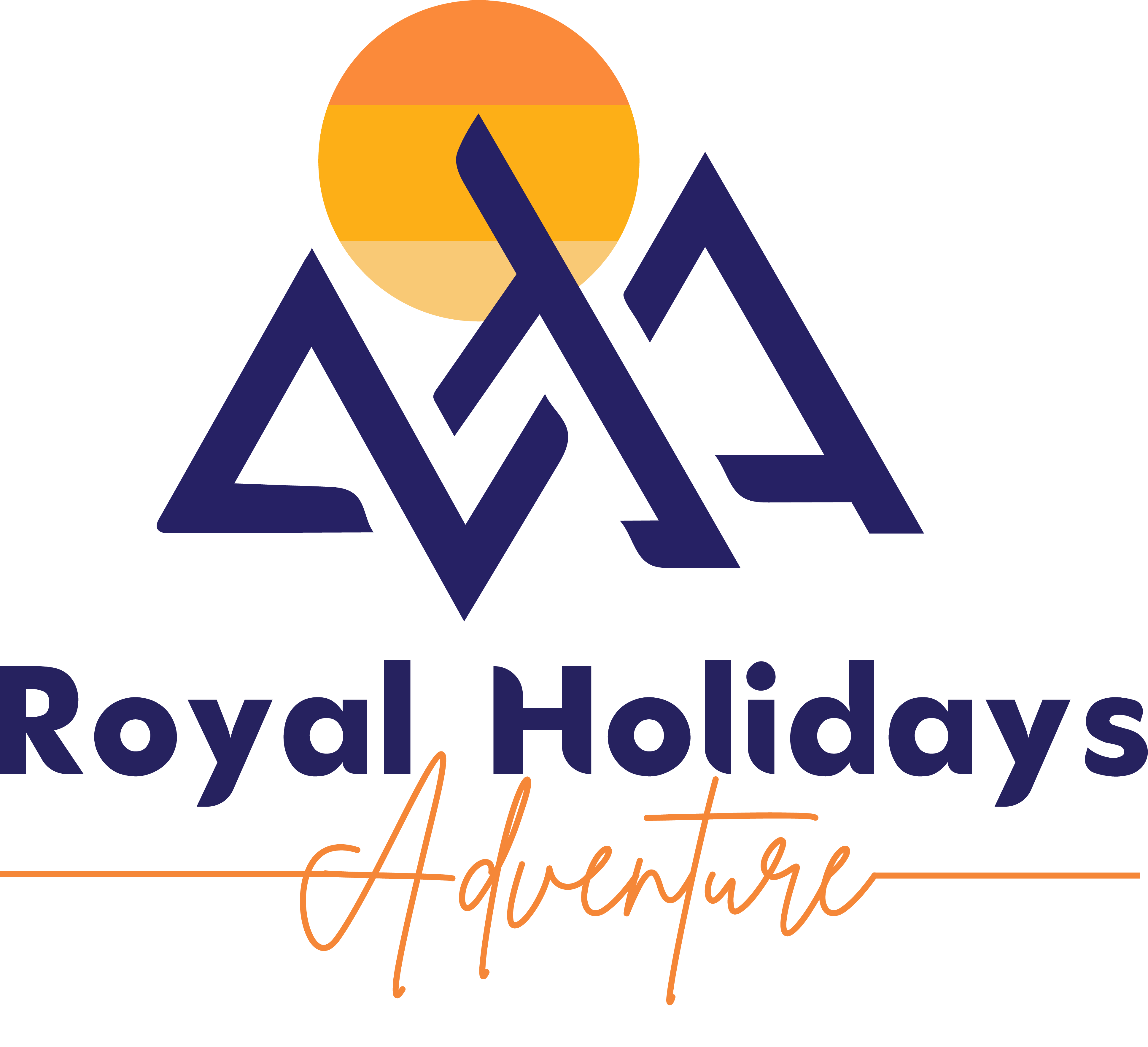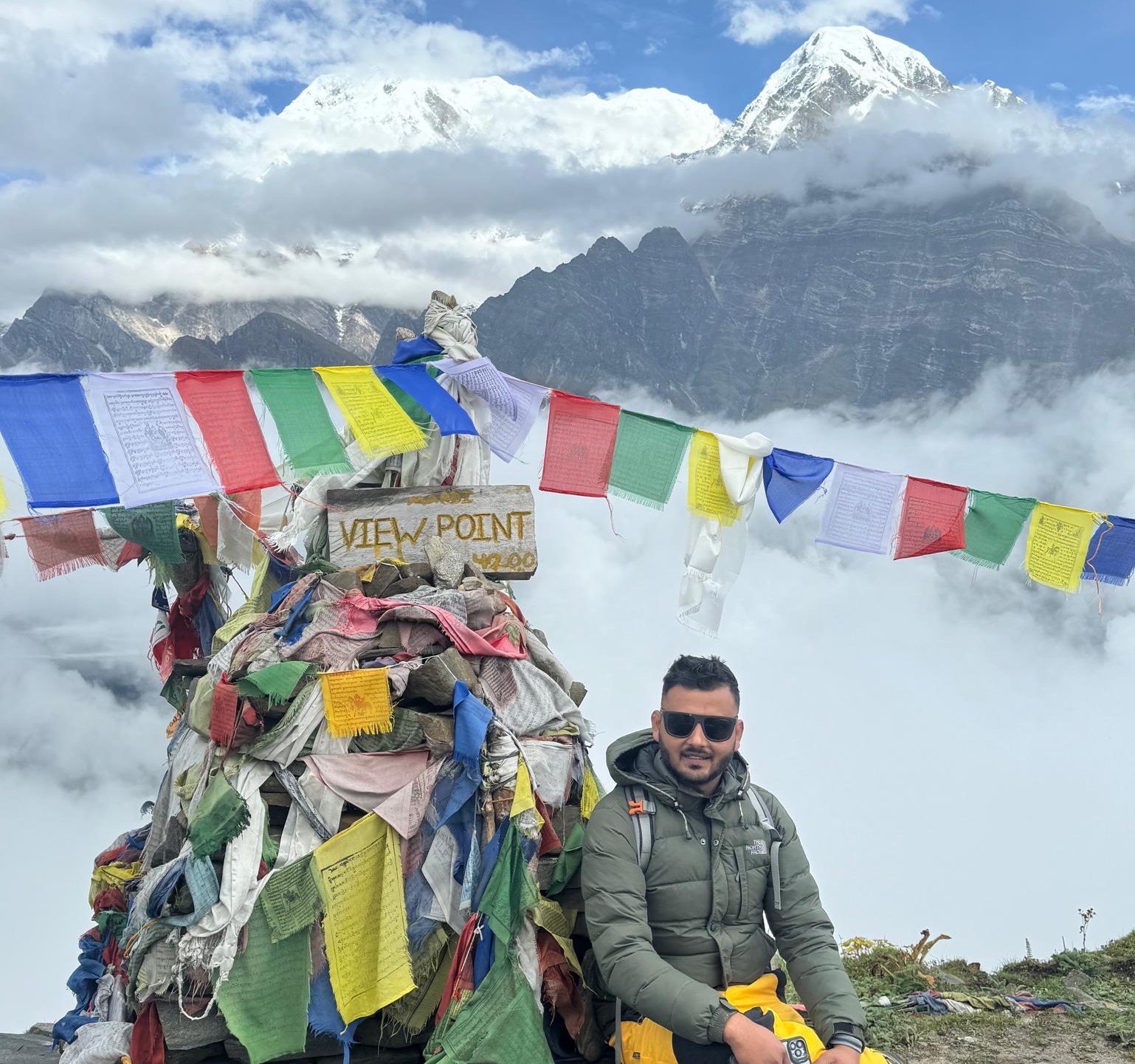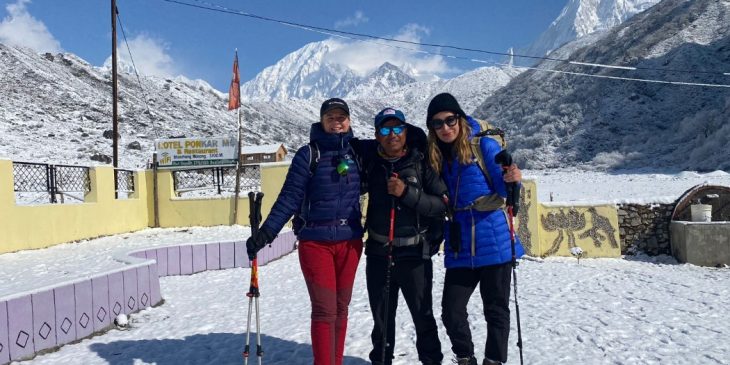
Trekking in Nepal offers a unique adventure for those seeking to explore the breathtaking Himalayas. From the iconic Mount Everest to the stunning Annapurna Circuit, the country boasts some of the world’s most spectacular hiking routes. Best Private Treks in Nepal provide an exclusive way to experience these majestic landscapes, allowing trekkers to customize their journey and enjoy a more intimate connection with nature and local cultures.
This guide delves into the best private treks in Nepal, covering essential aspects of planning and preparation. It explores top routes like Everest Base Camp and Langtang Valley, while also highlighting lesser-known gems such as Upper Mustang and Manaslu Circuit trek. The guide also touches on crucial topics like gear selection, cultural etiquette, and responsible trekking practices, giving readers all the information they need to embark on an unforgettable Himalayan adventure.
Table of Contents
Understanding The Best Private Treks In Nepal:
Definition of Best Private Treks in Nepal
Private treks in Nepal offer a unique and personalized way to explore the breathtaking Himalayan landscapes. These treks are customized experiences where travelers have their own dedicated guide and porter team, allowing for ultimate flexibility and enjoyment. Unlike group treks, private treks cater to individual preferences, enabling trekkers to create an itinerary that perfectly aligns with their requirements, budget, and travel dates.
Benefits of Choosing Private Treks
Flexibility: One of the primary advantages of private treks is the ability to tailor the experience to personal preferences. Trekkers can start on a date that fits their schedule, choose their preferred route, and adjust the pace according to their comfort level. This flexibility extends to making changes during the trek itself, allowing for extra acclimatization days or shorter days if needed.
Personalized attention: With a private guide, trekkers receive undivided attention and support throughout their journey. Guides can provide in-depth information about local culture, history, flora, and fauna, enhancing the overall trekking experience. They also assist with practical matters such as translating menus, ordering food, and handling specific requests.
Local expertise: Private guides often hail from the trekking region, offering invaluable local knowledge. They can inform trekkers about hidden viewpoints, local traditions, and up-to-date trail conditions, ensuring a more enriching and safe experience.
Safety and support: Licensed guides in Nepal possess essential skills in trekking, mountaineering, rescue techniques, and first aid. Their expertise is crucial in assessing risks, making informed decisions, and handling emergencies, providing trekkers with peace of mind.
Access to remote areas: Some of Nepal’s hidden gems, like the Tsum Valley trek, require guided tours. Private treks offer the opportunity to explore these less-traveled routes, connecting more deeply with local communities and enjoying the Himalayan wilderness in relative solitude.
Comparison with Group Treks
While group treks have their merits, private treks offer several distinct advantages:
Customization: Private treks allow for complete customization of the itinerary, whereas group treks typically follow fixed schedules.
Pace: Trekkers can set their own pace on private treks, avoiding the need to match the speed of a larger group.
Accommodation priority: Private guides often have better connections with local lodges, potentially securing the last available rooms or faster service during peak seasons.
Intimate experience: Private treks provide a more intimate connection with the surroundings and local culture, free from the dynamics of a larger group.
Flexibility in decision-making: Private trekkers can make spontaneous decisions to explore side trails or spend extra time at points of interest, which may not be possible in a group setting.
It’s worth noting that as of April 2023, the Nepal Tourism Board has made it mandatory for all tourists to hike with a licensed guide service, citing safety concerns. This regulation underscores the importance of professional guidance in Nepal’s trekking industry. While private treks may come at a higher cost compared to joining a group, many trekkers find the personalized experience and flexibility well worth the investment. The memories created on a private trek, shared with close companions or family members, often prove to be priceless. In conclusion, private treks in Nepal offer a tailored adventure that combines the beauty of the Himalayas with personalized service, flexibility, and local expertise. For those seeking a unique and immersive trekking experience, a private trek provides the perfect opportunity to explore Nepal’s stunning landscapes at one’s own pace and on one’s own terms.
Top 5 Private Trek Routes In Nepal:
Manaslu Circuit Trek, The Best Private Trek in Nepal
The Manaslu Circuit Trek offers an unparalleled adventure for those seeking a less crowded alternative to the popular Annapurna Circuit. This trek provides stunning views of Mt. Manaslu (8163m), the eighth highest peak in the world, and the Ganesh Himal range. The trail circumnavigates Mt. Manaslu, passing through diverse landscapes from sub-tropical jungles to stark Himalayan terrain.
Trekkers will encounter an interesting mix of Buddhist and Hindu villages along the way, experiencing the rich cultural tapestry of Nepal. The highest point of the trek is the challenging Larkya Pass (5100m), which links the Budhi Gandaki valley with the Marsyangdi valley. This trek requires a special permit and must be done with a licensed guide, ensuring a more exclusive and personalized experience.
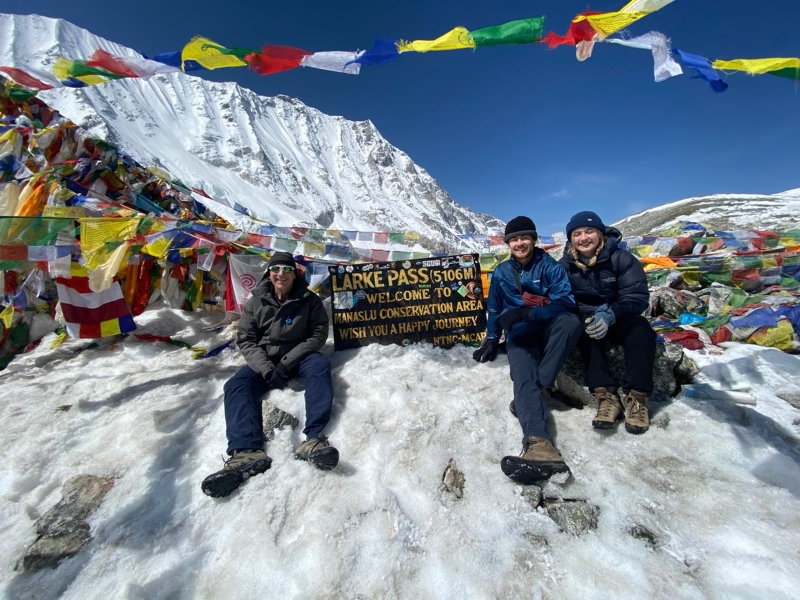
Upper Mustang Trek
The Upper Mustang Trek offers a unique cultural experience in a landscape that feels more Tibetan than Nepali. This high-altitude desert, closed to outsiders until 1992, features multi-hued gorges, green oases, and ancient monasteries. The trek takes you through the former Kingdom of Mustang, where traditional Tibetan Buddhist culture thrives.
The standard 10-day trek from Kagbeni to Lo Manthang passes through wind-blasted passes, with the highest point at 4,325m. For a more adventurous experience, the 12-day Upper Mustang loop offers a wilder route with more traditional villages and impressive scenery. The walled capital of Lo Manthang, with its narrow whitewashed streets and imposing monasteries, is a highlight of the trek.
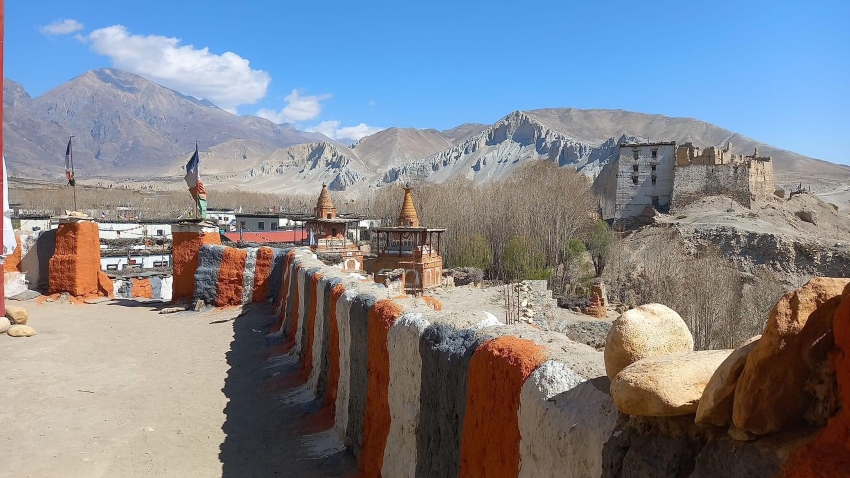
Nar Phu Valley Trek, The Best Private Trek in Nepal
The Nar and Phu valley trek , opened to tourism in 2002, offer a glimpse into a landscape of narrow gorges, 7km high mountains, and timeless stone villages. This trek requires a restricted area permit and camping gear, making it a true off-the-beaten-path adventure. The medieval village of Phu, with its mud and stone houses and red-painted monasteries, is a cultural highlight of the trek.
For experienced trekkers with the necessary permits, it’s possible to take a challenging route from Nar village into Upper Mustang via the Teri La Pass (5,595m). This trek combines stunning mountain scenery with rich cultural experiences, offering a unique perspective on Nepali and Tibetan traditions.
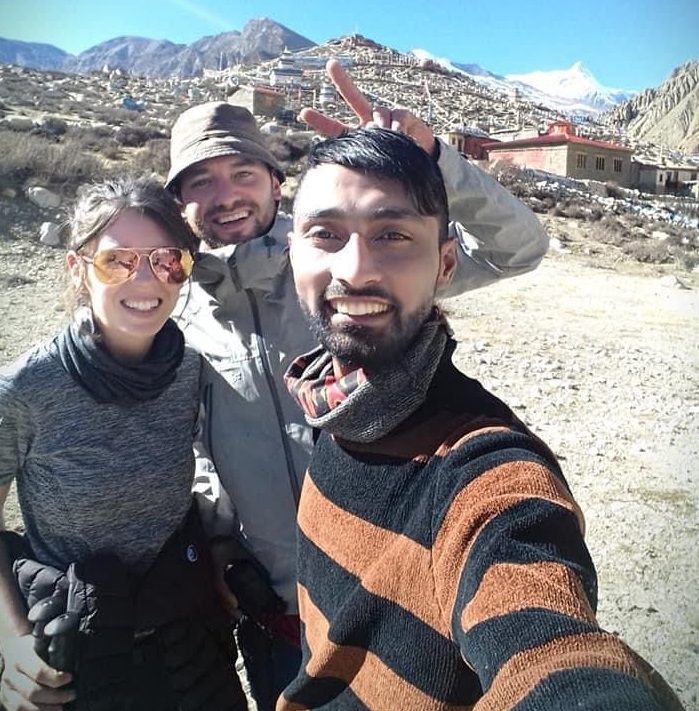
Langtang Valley Trek
The Langtang Valley Trek is a breathtaking adventure that takes you deep into the heart of the Himalayas, offering a perfect blend of natural beauty, cultural immersion, and challenging hiking. Nestled in the central region of Nepal, this trek is often referred to as the “Valley of Glaciers,” showcasing stunning landscapes of snow-capped peaks, pristine forests, and cascading waterfalls.
Unlike the more crowded Everest and Annapurna routes, the Langtang Valley Trek provides a serene and less-traveled path, allowing trekkers to experience the raw beauty of the Nepalese mountains and the warm hospitality of the local Tamang and Sherpa communities. As you journey through this hidden gem, you’ll witness diverse flora and fauna, ancient Buddhist monasteries, and the awe-inspiring sight of the Langtang Lirung glacier, making it an unforgettable experience for nature lovers and adventure seekers alike.
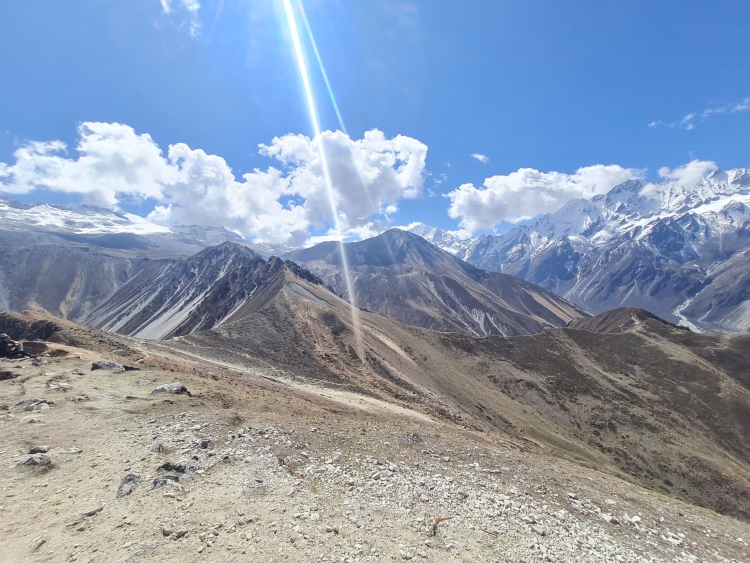
Kanchenjunga Circuit Trek
The Kanchenjunga Circuit Trek is an epic journey to the base of the world’s third-highest peak. This trek combines visits to both the North and South Base Camps, offering an immersive experience of Kanchenjunga’s grandeur. The trek spans approximately 220 kilometers and takes about 20 to 23 days to complete, making it a substantial commitment for serious trekkers.
The highest point of the trek is Pangpema (North Base Camp) at 5,143 meters (16,873 feet). Trekkers will traverse through diverse landscapes, from subtropical forests to glacial moraines, and experience the rich Sherpa and Tibetan-influenced culture of the region. This trek is ideal for experienced trekkers seeking a challenging adventure in a less commercialized area of Nepal.
Each of these private treks offers a unique perspective on Nepal’s diverse landscapes and cultures, providing unforgettable experiences for adventurous travelers seeking to explore beyond the more popular trekking routes.
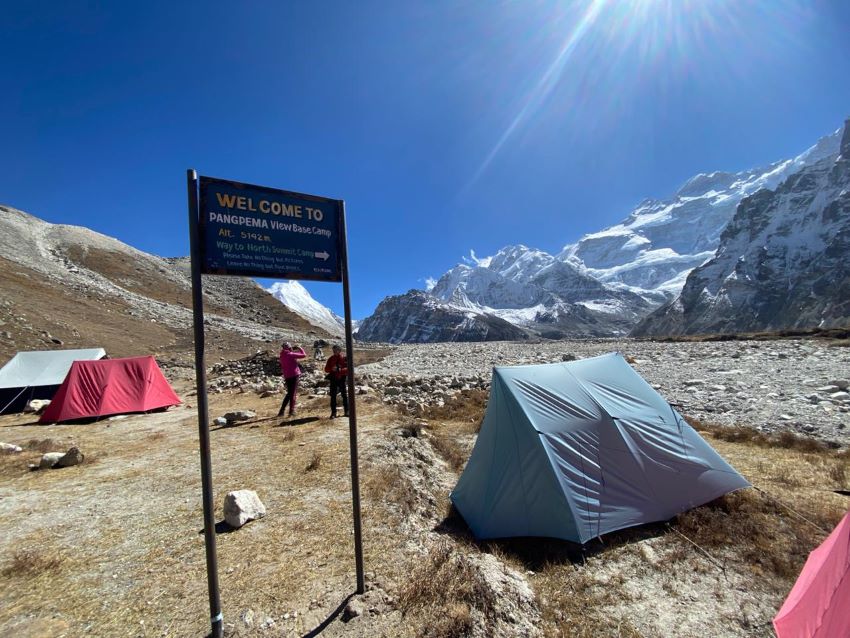
Planning your Best Private Treks in Nepal
Best Time To Go
When planning a private trek in Nepal, choosing the right season is crucial. Generally, the best times to trek are during spring (March to May) and autumn (September to November). Spring offers warmer temperatures, blossoming flora, and temperate days, making it ideal for trekking in areas like lower Annapurna. Autumn brings clear skies, moderate temperatures, and fantastic trekking conditions, providing crystal-clear views of the Himalayan mountain ranges.
Summer (late May to mid-September) is typically not recommended due to monsoon rains, high temperatures, and uncomfortable conditions. Winter (December to February) can be challenging for high-altitude treks, with daytime temperatures ranging between 9-12ºC (48-54ºF) and sub-zero temperatures in the evenings. However, winter can be suitable for lower to mid-altitude trails, where temperatures remain fairly pleasant.
Required Permits And Documentation For Trekking In Nepal
Obtaining the necessary permits is a crucial step in planning a private trek in Nepal. Different regions require specific permits, and trekking without proper documentation is now illegal. Here are the key points to consider:
- Trekking permits: These are mandatory and vary by location. They help ensure trekker safety, environmental conservation, and cultural preservation.
- Types of permits: These may include TIMS (Trekkers Information Management System), Conservation Area Permits, National Park Permits and Restricted Area Permits.
- Where to obtain permits: Permits can be obtained through licensed trekking agencies in Nepal
- Required documents: To obtain permits, trekkers need to provide:
- A valid passport copy
- A recent passport-sized photo
- Contact details
- Travel and health insurance documents
- Arrival and departure flight details
- Restricted areas: For trekking in restricted areas, a minimum of two trekkers is required, and permits must be obtained through authorized trekking agencies.
Choosing A Reliable Trekking agency
Selecting a reputable trekking company is essential for a safe and enjoyable private trek. Consider the following factors when making your choice:
- Client feedback: Research previous client reviews and testimonials on the company’s website and independent platforms like TripAdvisor.
- Services and pricing: Compare the services offered by different agencies, including facilities like transportation, permits, accommodation, and guide services.
- Safety measures: Verify that the company prioritizes safety by providing necessary equipment and following proper protocols.
- Guide qualifications: Ensure the company provides licensed, experienced guides with good language skills and knowledge of the trekking areas.
- Environmental responsibility: Choose a company that follows the “leave no trace” principle and respects local traditions and rules.
- Group size: Consider agencies that handle smaller groups, as they can provide more personalized attention and easier management.
By carefully considering these factors and thoroughly researching your options, you can plan a private trek that aligns with your preferences and ensures a safe, enjoyable experience in Nepal’s breathtaking landscapes. We Royal Holidays Adventure Team are perfect to operate your private treks in Nepal because we believe in quality services and safety. Send us your inquiry for your perfect holiday trip.
Essential Gears And Packing Tips:
Clothing Essential
When preparing for a trek in Nepal, packing the right clothing is crucial for comfort and safety. A good quality down jacket is essential for keeping warm at high altitudes. For base layers, bring two sets of thermal underwear, preferably made from quick-drying materials. A fleece pullover hoodie is ideal for warmth, even in damp conditions.
For outer layers, pack a waterproof jacket and pants to protect against rain and snow. At lower altitudes, lightweight hiking shorts and T-shirts are suitable. Include at least two pairs of hiking pants made from quick-drying fabric. Gloves are crucial; bring a lightweight pair and a heavyweight water/windproof pair.
Don’t forget about headwear. Pack a woolen hat for cold evenings and mornings, a sun hat for protection during the day, and a microfleece buff for versatility at various altitudes.
Trekking Equipment
Footwear is a critical component of your trekking gear. Invest in a pair of comfortable, waterproof hiking boots with good ankle support. For evenings at teahouses, bring a pair of sandals or running shoes. Pack several pairs of good-quality hiking socks and consider bringing thin inner socks for added comfort.
A reliable backpack is essential. For those using a porter, a 70L waterproof duffle bag is recommended. If carrying your own gear, opt for a comfortable 50-60L rucksack with a rain cover. Additionally, bring a 25-30L daypack with a rain cover for daily use.
Other essential equipment includes:
- Trekking poles for stability and joint support
- A sleeping bag rated for at least -20°C
- A sleeping bag liner for added warmth and hygiene
- A reusable water bottle to reduce plastic waste
- A headlamp with spare batteries
- UV-protective sunglasses to prevent snow blindness
First-aid And Medication
A well-stocked first-aid kit is crucial for any trek in Nepal. Include items such as:
- Antiseptic wipes and cream
- Bandages and blister pads
- Pain relievers like ibuprofen and paracetamol
- Medicine for traveler’s diarrhea and gastrointestinal issues
- Rehydration sachets
- Throat lozenges
- Insect repellent and antihistamine cream
For high-altitude treks, consider bringing prescription medications such as acetazolamide (Diamox) for altitude sickness prevention, but only after consulting with your doctor. If you have any personal medications, ensure you bring an adequate supply for the duration of your trek. Remember to pack all medications in their original packaging and bring a copy of your prescriptions. It’s also wise to include some general-purpose antibiotics, but again, consult your doctor before doing so.
Lastly, don’t forget essential toiletries like biodegradable soap, toothbrush, toothpaste, and a quick-dry towel. Hand sanitizer and moisturizing cream are also important for maintaining hygiene and combating the dry mountain air.
Culture Etiquette And Responsible Trekking:
Respecting Local Customs
Trekking in Nepal offers a unique opportunity to immerse oneself in rich cultural traditions. Respecting local customs is not just a matter of etiquette; it’s an essential aspect of responsible tourism. Trekkers should embrace the Nepali spirit by learning basic phrases like “Namaste” (hello) and “Dhanyabad” (thank you). These small gestures can go a long way in fostering positive interactions with local communities.
When visiting religious sites or entering homes, it’s crucial to remove one’s shoes. Dressing modestly is equally important, especially in remote areas and religious places. Both men and women should avoid revealing clothing, such as sleeveless shirts or tank tops. It’s advisable to consult with guides for specific dress codes in different regions.
Photography is a common desire among trekkers, but it’s vital to seek permission before capturing images, particularly during rituals or in religious settings. Some customs may find photography offensive, so it’s best to err on the side of caution and always ask first.
Environmental Considerations
Nepal’s stunning landscapes are a major draw for trekkers, but they’re also fragile ecosystems that require protection. The concept of “Leave No Trace” is paramount in preserving these environments for future generations. This philosophy extends beyond simply not littering; it encompasses a range of responsible practices.
Trekkers should stick to designated trails to avoid damaging vegetation and disrupting wildlife habitats. When encountering wildlife, maintain a respectful distance and refrain from feeding animals, as this can alter their natural behaviors. Flash photography should also be avoided around wildlife.
Water management is another crucial aspect of environmental responsibility. Trekkers are encouraged to use refillable water bottles with purification systems to reduce plastic waste. This practice not only helps keep the trails clean but also supports the local economy by reducing the need for imported bottled water.
Proper waste disposal is essential. In areas where facilities are limited, trekkers should pack out their trash and dispose of it responsibly in designated areas. When nature calls in remote areas, it’s important to do so at least 100 meters away from water sources and to bury waste properly.
Supporting Local Communities
Trekking in Nepal provides an excellent opportunity to support local economies. Many regions, including popular routes like the Everest Base Camp trek, rely heavily on tourism for their livelihood. Trekkers can make a positive impact by choosing locally owned accommodations, such as teahouses and homestays. These options not only provide authentic experiences but also ensure that tourism benefits are distributed throughout the community.
Hiring local guides and porters is another way to support the local economy while enhancing the trekking experience. Local guides possess invaluable knowledge about the region’s geography, culture, and safety considerations. It’s important to treat porters with respect and not overburden them with excessive luggage. Trekkers should also ensure fair wages for their services.
When purchasing souvenirs or supplies, opt for locally made products. This not only provides unique mementos but also supports local artisans and businesses. Eating local cuisine is another way to contribute to the community while enjoying authentic flavors.
By following these guidelines for cultural etiquette and responsible trekking, visitors can ensure their journey through Nepal is not only memorable but also sustainable and respectful to both the environment and local communities. This approach allows trekkers to fully appreciate the beauty and culture of Nepal while minimizing their impact and contributing positively to the regions they explore.
Conclusion
Best Private Treks in Nepal provide a unique opportunity to explore the breathtaking Himalayan landscapes at one’s own pace. From the iconic Everest Base Camp to the lesser-known gems like Upper Mustang, these customized adventures offer flexibility, personalized attention, and a deeper connection with local cultures. Proper planning, including choosing the right season, obtaining necessary permits, and selecting a reliable trekking company, has a significant impact on the overall experience.
To ensure a safe and enjoyable trek, it’s crucial to pack appropriate gear and respect local customs and environments. By following responsible trekking practices and supporting local communities, visitors can contribute positively to the regions they explore. In the end, a private trek in Nepal offers not just stunning vistas, but also a chance to create lasting memories while gaining a deeper appreciation for the unique beauty and culture of the Himalayas.
